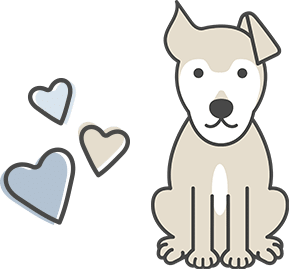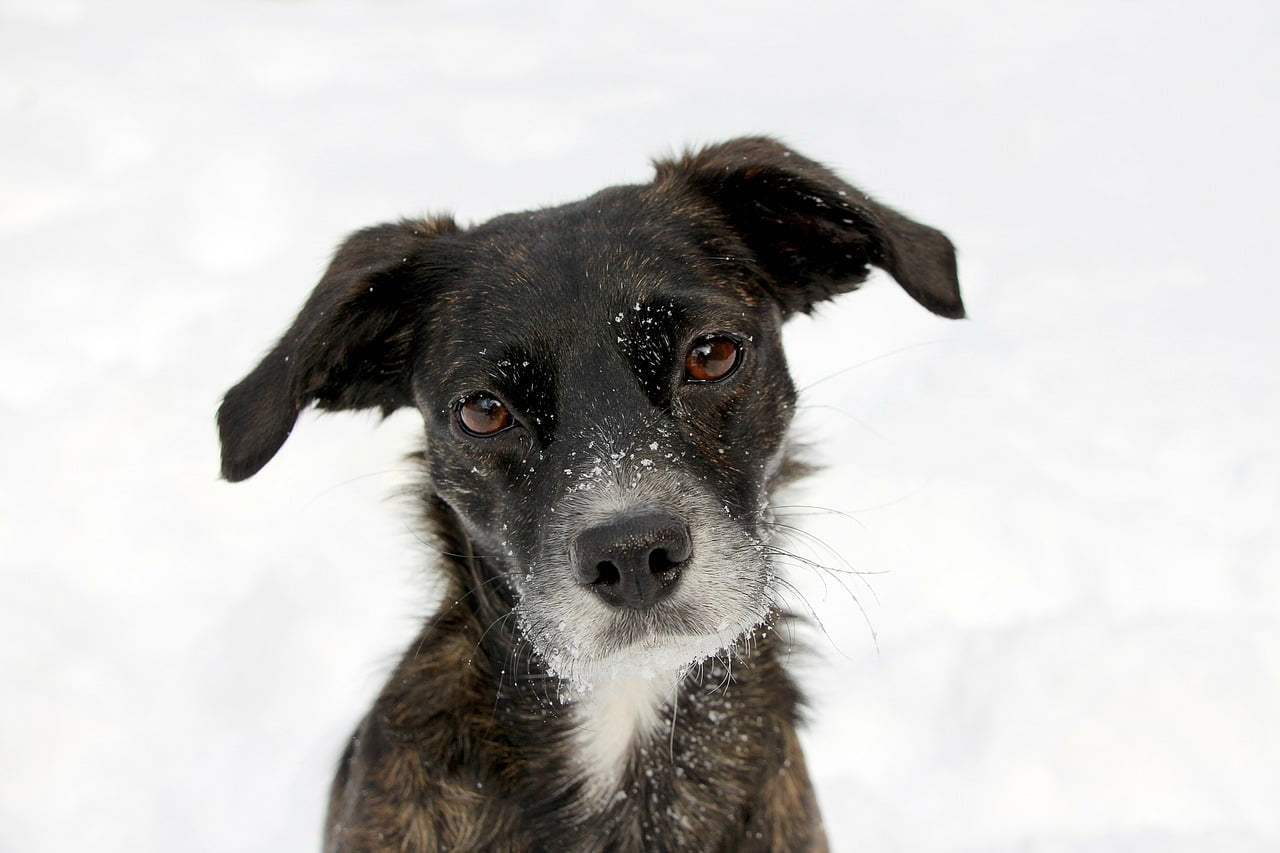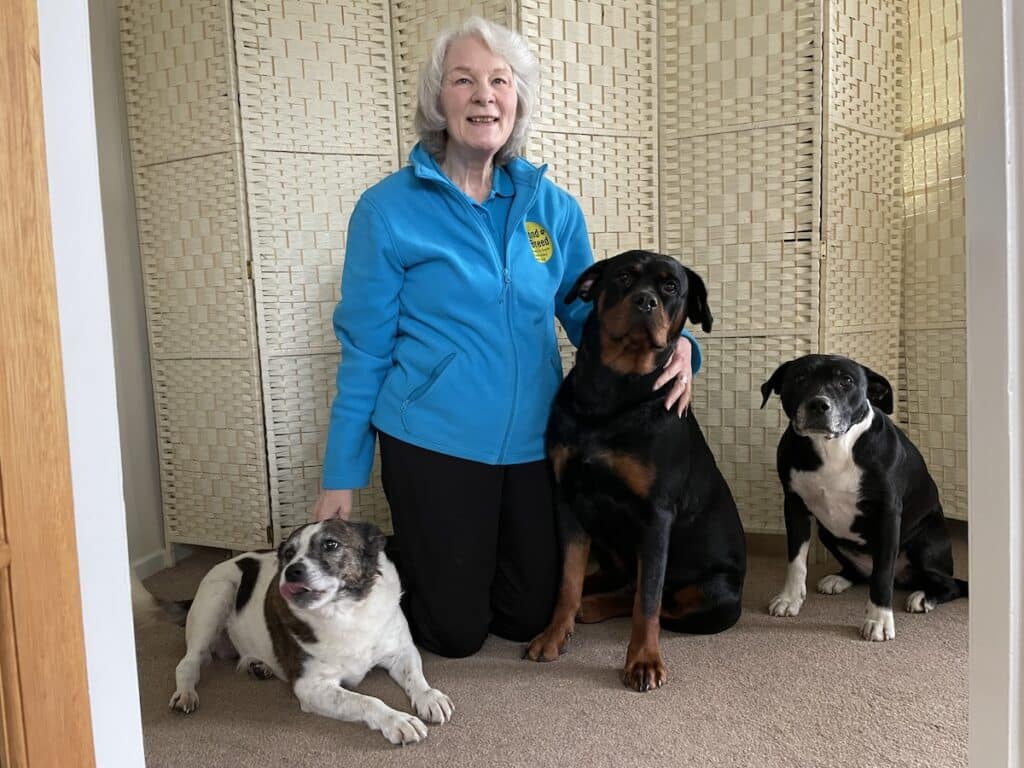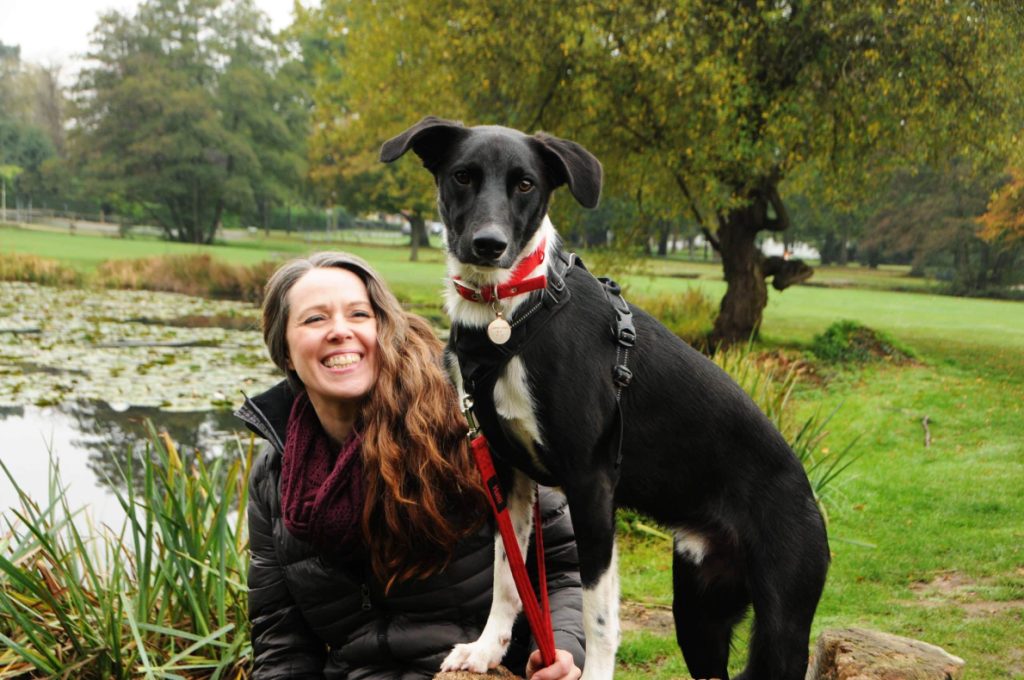The cold, rain, frost and snow during the winter means we need to take extra care of our dogs
And with the second Beast from the East set to hit the UK at the end of the month, caring for our pet’s health is vital.
I spoke to vet and founder of the Canine Arthritis Management website Hannah Capon for her tips on keeping pets safe and warm in the winter.
Keep antifreeze out of reach
Antifreeze can be toxic to pets, explains Hannah: “It’s actually really tasty and dogs and cats are drawn to it.
“My sister’s two cats were poisoned by a man who put out antifreeze for them to drink and he killed 33 cats which was absolutely devastating.
“It’s an extremely poor prognosis because it causes renal failure very quickly and animals often only show symptoms when it’s too late.
“So, keep that well out of reach and make sure that there’s no spills on the driveway when you’re putting it into your car.
“Keep it on a shelf that’s very high and out of reach or locked away, it’s not something to be taken lightly. If you spill it on the drive, clean it up.
“Don’t let dogs drink from puddles as they may contain it too. It’s something that kills pets every year and isn’t to be taken lightly.”
Last year I shared the story of Mischa, a ten month old Samoyed who spent five days on a vodka drip after biting into a bottle of anti-freeze.
Fortunately, her owners noticed straight away and she survived. To read her story, click here.
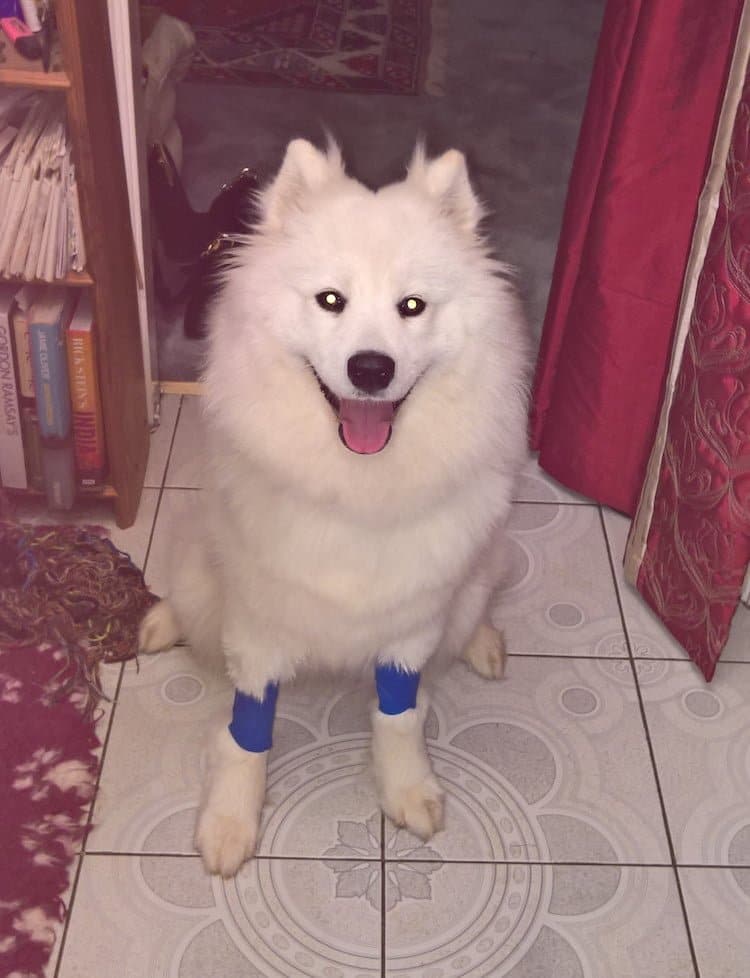
Wash your dog’s paws after each walk
Ice and snow means many councils spread salt on the roads which can be harmful to pets.
Hannah advises washing paws after each walk. She says: “Dogs and cats have a tendency to lick paws if something is irritating them.
“It means they can ingest high amounts of salt which can cause gastric indigestion and make them poorly.
“A good idea is to keep a cat litter tray with some water outside and put theirs paws in it when you get home, give them a rinse and then dry them off.”
Check paw pads for ice if you’ve been walking in the snow
If you’re super prepared then you can put paw wax on your dog’s paws ahead of them going out in the snow.
And using a paw balm to moisturise them in the winter can help keep them in good condition, but if you’re out in the snow then aftercare is key.
Hannah says: “It’s lovely to play out in the snow with your dog if it’s something they enjoy and it’s important to check their feet afterwards.
“We all know that ice makes your feet go a bit numb, so one thing to be mindful of is that your pet can injure themselves and not be aware of it.
“When you get home, make sure any ice and snow is removed from the feet. Have some warm water, give them a rinse then towel dry them off.
“If your dog’s licking their feet a lot, they might not just be cleaning them, it could be a sore, so check to see whether they’ve actually had a cut from the ice.
“If they’re incessantly licking their foot, it could be because they’ve got a sore and that licking will not just clean it, it will make it worse so if you’re concerned, visit your vet.”
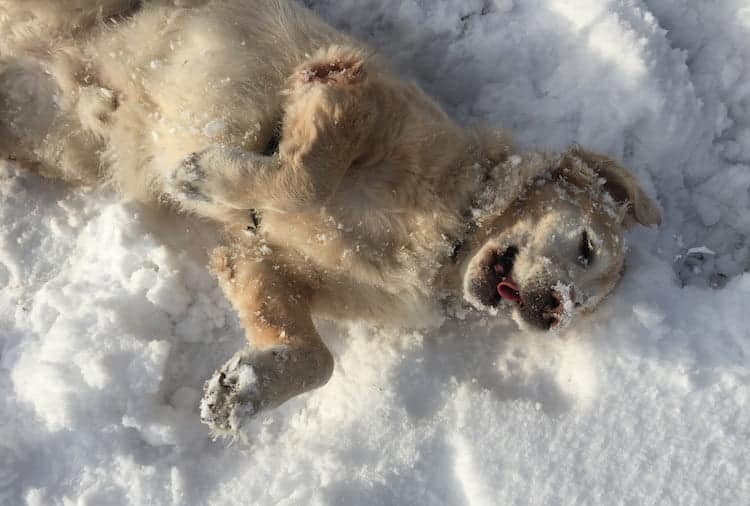
Remember ice makes your dog unsteady on their feet too
Hannah says she finds it really upsetting seeing videos of pets sliding around and falling over on ice and people laughing at them.
She says: “It makes me really angry. You wouldn’t laugh at a child falling over would you, and it’s exactly the same for pets.
“Ice and snow is slippery and dangerous. People think that dog’s pads and claws offer traction but they don’t on ice. They don’t dig in.
“When pets fall over, they don’t tend to yelp, but it doesn’t mean that they don’t hurt themselves and owners need to be mindful of that.
“It’s a global misunderstanding about how their brain works. Just because when they fall they come running back, it doesn’t mean that fall didn’t actually hurt them.
“We can’t wrap them in cotton wool but it’s good just to be aware that we need to be careful with them and that they can get injured.”
Avoid icy lakes and streams
Every year we hear of people going in lakes after their pets so if you’re near water, keep your dog on a lead.
Hannah says: “Your dog is most likely to be a lighter weight and more agile than you but they’re just as prone to having an accident under the ice as you are.”
If your dog does fall in water, click here to read First Aid Advice from Rachel Bean.
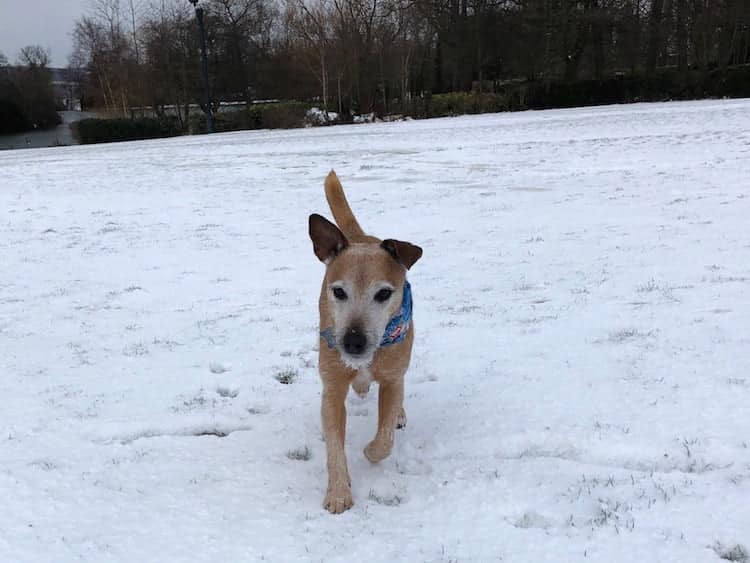
Keep your dog wrapped up in the cold
Some dogs don’t need coats whatever the weather like thick coated German Shepherds and double coated Huskies.
But Hannah says most pets will feel the benefit of a practical, well fitting coat. “It’s important to look at the quality of the coat,” she says.
“It’s not a fashion item. It’s got a function, so is it actually covering the dog? I always see dogs with their bums always hanging out of the back of their coats.
“It’s a bit daft really isn’t it? You wouldn’t want a cold bum, so check that it isn’t all about the hood and the fluffy rim, but it actually does cover your dog from head to tail.
“Make sure they’re not going to injure themselves. If they’re flying around, you don’t want straps and buckles or anything that could get caught in trees or bushes.
“Ensure their coat isn’t going to slip round and become something that they’re going to trip over and fall or get their front legs caught in.”
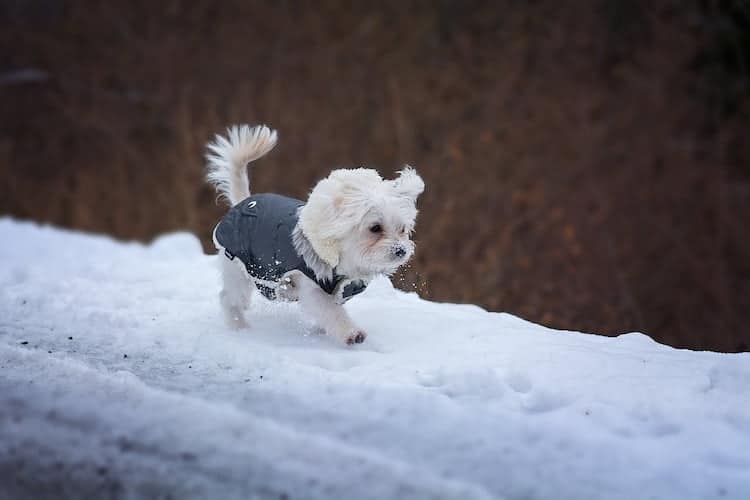
Try to regulate their temperature when you’re out
When your dog is walking they’re keeping warm, but if you decide to stop and have a coffee, spare a thought for them.
Hannah says: “Don’t leave them sat on a cold ground. Their muscles will be warm from the walk but if you just stop, they’re going to get chilly.
“Instead of sitting outside or standing outside, go under cover where they’re protected from the cold and bitter wind and can stay warm.”
If they don’t want to go out, don’t make them!
Not all dogs like the cold and if your pet is one of them, it’s fine for them to stay indoors. Hannah says: “They can just go outside to toilet and if that’s all they want to do don’t worry.
“As long as there is no other behaviour change that needs to be looked into, staying out of the cold is ok.
“You can play enrichment games at home to stimulate them and keep them entertained and they can exercise in your house.”
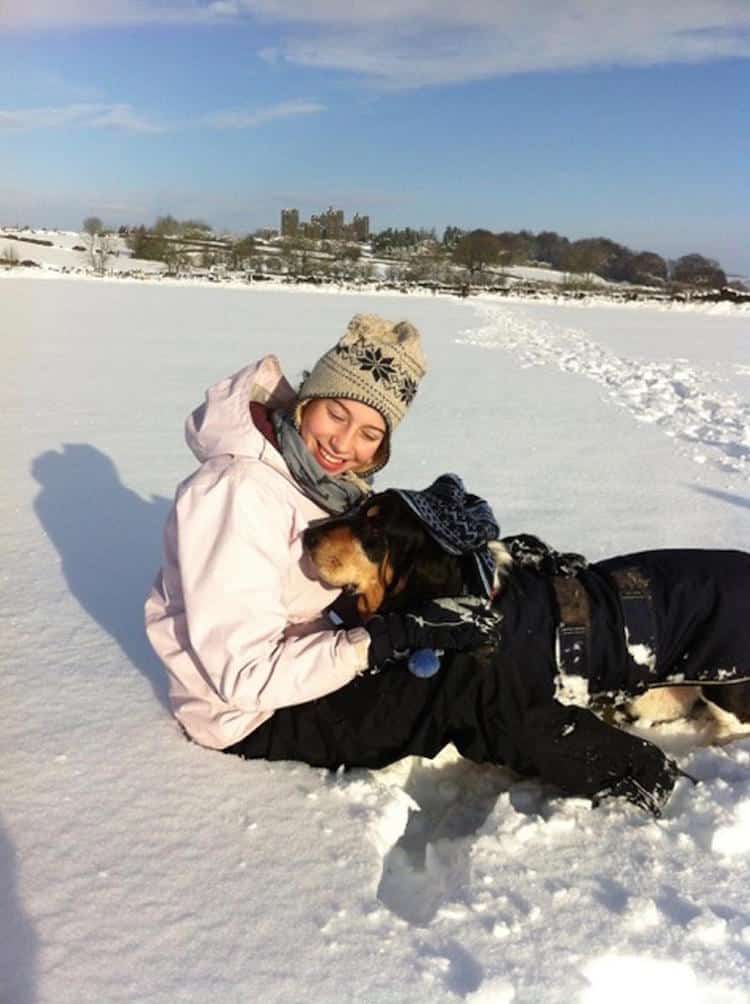
Caring for dogs with arthritis in the winter and all year round
Hannah set up the Canine Arthritis Management website as a resource to help people learn how to care for pets.
She urges owners to consider their environment and exercise regime daily to ensure their dog is well and not in pain.
Hannah says: “We always promote the multi-modal approach, where you look at different elements of the dog’s life and do a tick list in your head.
“So for sleeping, is the place dry, warm, free from draughts in a non-busy area, or close enough to the family for them to receive comfort but not be stood upon?
“If you have wood floors, put down rugs or consider carpets. Think of your dog as you would do a toddler or elderly person, you wouldn’t want to make them repeatedly slip and fall on a hard surface.
“Is their toileting area easily accessible? Can they get there without sustaining injury? Dogs are creatures of habit and they don’t like upsetting the relationship that they’ve got with their owners.
“If they always toilet in one part of the garden, they try to go back to it so make sure it’s easy for them to reach.
“Look at their hobbies. They may have enjoyed chasing balls or frisbees when they were younger but think about whether that is suitable for their condition.
“In the height of the moment, they enjoy it. It’s when the moment is passed that you’ll start to see them hobble a little bit or seem a little bit stiff.
“When this happens you need to look at other activities that will enrich them but not cause pain.
“Look at your exercise routine. Are you a person of habit that always does that lap of the park, but now that you think about it, halfway round they’re starting to drag behind?
“Maybe you can turn it into a figure of eight. On good days you do the whole eight, on bad days you just do the half eight.
“I’ve had many owners that thought their dog was resigned to a life of anti-inflammatory supplements and interventions.
“But once they dealt with the lifestyle and the environment, they’ve actually reversed some of their requirements and they’ve reduced their anti-inflammatories.
“They have got control and their dog is enjoying life again.”
Hannah has a free Facebook group with regular tips for owners and inspiring stories of dogs living their best lives!
Click here to join and you can find a wealth of information about caring for dogs with arthritis at www.caninearthritis.co.uk
If you found this post useful, you might enjoy Why Hannah Capon set up the Canine Arthritis Management website or Caring for your dog when they’re diagnosed with Dementia.

